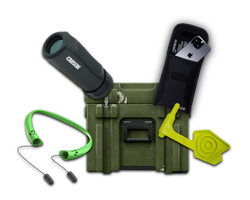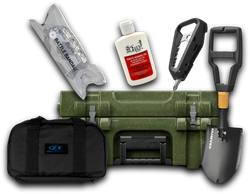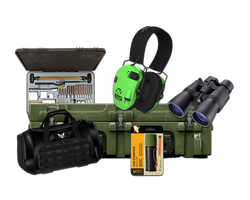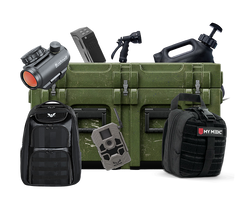How to Make Metal Shooting Targets: A Comprehensive Guide
Table of Contents
- Introduction
- Understanding Metal Shooting Targets
- Tools and Materials Required
- Step-by-Step Guide to Making Metal Shooting Targets
- Best Practices for Using Metal Shooting Targets
- Conclusion
- FAQ Section
Introduction
Have you ever felt the thrill of hitting a target and hearing that satisfying "clang" echo across the shooting range? For many shooting enthusiasts, creating their own shooting targets can be as rewarding as the act of shooting itself. The process not only saves money but also allows for personalization in target design and usage. But how exactly do you go about crafting metal shooting targets that are safe, durable, and effective?
In this guide, we'll delve into the essential steps and considerations involved in making metal shooting targets. You'll learn about the types of metal suitable for targets, the tools required, and crucial safety measures to keep in mind. We will also explore different designs, their applications, and the best practices for maintenance to ensure longevity and safety.
By the end of this article, you will not only understand how to make metal shooting targets but also gain insights on optimizing your shooting experience. Whether you’re a casual shooter or an experienced marksman, this guide is tailored to enhance your tactical preparedness.
Understanding Metal Shooting Targets
The Purpose of Metal Targets
Metal shooting targets serve a dual purpose: they provide feedback upon impact and help shooters improve their accuracy. Unlike paper targets, metal targets withstand repeated shots, making them a cost-effective solution for practice. Moreover, the audible feedback from a metal target enhances the shooting experience, allowing shooters to gauge their performance instantly.
Types of Metal
When considering how to make metal shooting targets, the type of metal is paramount. Here are the most commonly used metals:
-
Mild Steel: While easy to find and affordable, mild steel is not ideal for high-velocity rounds. It can deform or even fragment, leading to potential safety hazards. Mild steel targets are best suited for lower-caliber firearms and longer distances.
-
AR500 Steel: This is the gold standard for shooting targets. AR500 steel is hardened and can withstand high-velocity rounds without deforming. It’s suitable for all calibers and is favored for its durability and safety.
-
AR400 Steel: Slightly less durable than AR500, AR400 can still be used for many applications, especially with lower-caliber firearms. It’s important to note that AR400 may not hold up well under repeated hits from high-velocity rounds.
Target Design Considerations
When deciding how to make metal shooting targets, the design plays a crucial role in usability and safety. Targets can come in various shapes and sizes, including:
-
Gong Targets: Circular plates that swing upon impact. These are popular for long-range shooting.
-
Square or Rectangular Targets: These are versatile and can be used at various distances.
-
Dueling Trees: A fun and competitive design where two targets are mounted on a vertical pivot, allowing shooters to knock the targets from one side to the other.
-
Reactive Targets: These include targets that spin or fall when hit, providing instant feedback and a dynamic shooting experience.
Tools and Materials Required
Creating your own metal shooting targets requires specific tools and materials. Here’s a comprehensive list:
Materials
- Metal Plates: Choose between mild steel or AR500 steel for the best results.
- Hanging Hardware: Chains, hooks, or T-posts for mounting your targets.
- Paint: For marking targets and improving visibility. Use a durable spray paint suitable for outdoor use.
- Coating: Optional, but a protective coating can help prolong the life of your metal targets.
Tools
- Cutting Tools: A plasma cutter or metal saw for cutting the metal plates to desired sizes.
- Drill: For making holes for mounting.
- Wrenches: For tightening bolts or screws.
- Angle Grinder: For smoothing edges and removing sharp points after cutting.
- Safety Gear: Goggles, gloves, and ear protection are essential for safe handling and cutting of metal.
Step-by-Step Guide to Making Metal Shooting Targets
Step 1: Choose Your Design and Metal
Before you begin, decide on the design of your target. Will it be a simple gong, a rectangular plate, or a more complex dueling tree? Select the appropriate metal based on your expected shooting conditions.
Step 2: Measure and Cut the Metal
Using your cutting tools, measure and cut your metal plates to the desired dimensions. For example, a common size for a gong target is 12 inches in diameter, while rectangular targets might measure 12x12 inches or larger.
Step 3: Prepare the Edges
After cutting, use an angle grinder to smooth the edges of your metal plates. This step is crucial for safety, as sharp edges can cause injury during handling.
Step 4: Drill Mounting Holes
Using a drill, create holes for mounting the targets. Ensure the holes are large enough to accommodate your chosen hanging hardware, typically around 1/2 inch in diameter.
Step 5: Paint the Targets
For visibility, paint your targets with a bright color. Use durable, outdoor-grade spray paint that can withstand the elements. Consider using contrasting colors for added visibility against the background.
Step 6: Set Up the Targets
Using chains, hooks, or T-posts, mount your targets securely. Ensure they are positioned at a safe distance from the shooting line, typically at least 100 yards for high-caliber firearms.
Step 7: Test the Setup
Before using your new targets, conduct a safety check. Ensure everything is securely mounted and that there are no sharp edges exposed. Perform a test shot from a safe distance to confirm the target's durability and stability.
Best Practices for Using Metal Shooting Targets
Safety First
Safety should always be your top priority when shooting at metal targets. Here are some essential safety practices:
- Always wear appropriate safety gear, including eye and ear protection.
- Ensure a clear shooting area, free of obstructions or bystanders.
- Maintain a safe distance from the targets. As a general rule, keep at least 100 yards for high-velocity rounds and 50 yards for pistols.
- Regularly inspect your targets for damage or deformation, replacing any that are not safe to use.
Target Maintenance
To maximize the lifespan of your metal targets, follow these maintenance practices:
- Regularly paint the targets to maintain visibility and prevent rust.
- Store targets in a dry place when not in use to avoid corrosion.
- Inspect the targets after each use, looking for signs of wear, and replace them if necessary.
Adjusting Difficulty Levels
To enhance your shooting skills, consider adjusting the difficulty of your targets:
- Vary Distances: Move targets closer or further away based on your skill level.
- Change Sizes: Use smaller targets for a greater challenge.
- Incorporate Movement: Create a dynamic shooting experience by hanging targets that swing or fall when hit.
Conclusion
Creating your own metal shooting targets can be an incredibly rewarding experience. Not only does it allow you to customize your shooting practice, but it also promotes safety and tactical preparedness. By following the steps outlined in this guide, you'll be well-equipped to make durable, effective targets that enhance your shooting experience.
Remember, whether you're honing your skills for competitive shooting or just having fun at the range, the right targets can significantly impact your performance. Embrace the challenge, stay safe, and enjoy the clang of success with your newly crafted metal targets.
FAQ Section
What is the best type of metal for shooting targets?
AR500 steel is recommended due to its durability and resistance to deformation from high-velocity rounds.
How thick should the metal be for shooting targets?
For most applications, 3/8-inch thick AR500 steel is ideal. This thickness can withstand repeated hits from various calibers without significant deformation.
How far should I stand from metal shooting targets?
A distance of at least 100 yards is recommended for high-velocity rounds, while 50 yards can be sufficient for lower-caliber firearms.
Can I use mild steel for shooting targets?
Mild steel can be used, but it's not recommended for high-velocity rounds as it can deform or fragment, posing safety risks.
How can I maintain my metal shooting targets?
Regularly inspect the targets for damage, repaint them for visibility, and store them in a dry place to prevent rust.
For those looking to equip themselves with high-quality tactical gear, check out the Crate Club Subscription Services for curated survival tools and equipment delivered monthly. Additionally, explore the Crate Club Shop for a wide range of tactical and survival gear to enhance your shooting experience.
Share this article



